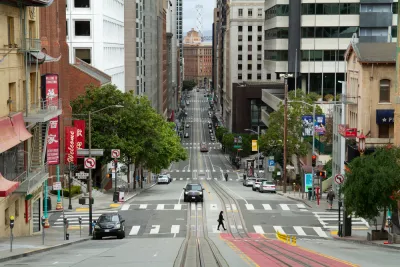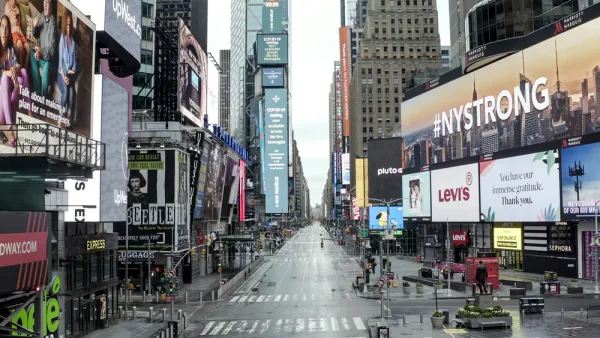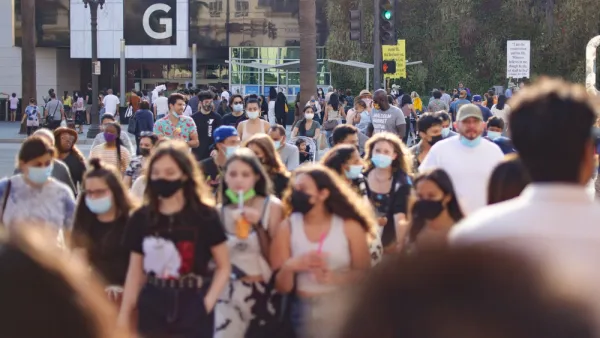An argument for the long-term cultural and economic viability of the city, even after the pandemic.

Highly productive workers and industries will continue to cluster in cities, and remote work can only go so far in reshaping the global economy, according to one leading economics researcher.
Jerusalem Demsas writes in the article and interview linked below on one of the most common questions of the pandemic: Will workers return to the city, or will huge number of former office workers and urban dwellers decamp for good to the suburbs, where they'll work from home for the rest of their careers?
"Much ink has been spilled on how Covid-19 will impact the urban geography of the United States," writes Demsas to introduce the context of the argument to come. "Early in the pandemic, some were even forecasting the death of the nation’s superstar cities as some urban dwellers fled for the suburbs."
There were plenty of signs for naysayers of urbanity to point to in predicting the death of cities as a result of the pandemic. "As the year went on, demand for suburban homes fueled questions about whether these moves would be permanent," and "A June National Bureau of Economic Research paper by researchers from the University of Chicago estimated that 37 percent of jobs can be performed entirely remotely."
There are still, however, reasons to believe in the ongoing centrality of large cities in the economy and culture of the United States. To present that case, Demsas interviews with Enricco Moretti, economic professor at the University of California, Berkeley, who authored the 2013 book The New Geography of Jobs.
"In this interview, Moretti explains why high-productivity workers cluster in a handful of cities and why the strength of those forces means it’s unlikely that very many of us will be working fully remotely in the long run. We also discuss why such a small slice of the American labor force can determine so much about which cities dominate," writes Demsas.
FULL STORY: Remote work is overrated. America’s supercities are coming back.

Analysis: Cybertruck Fatality Rate Far Exceeds That of Ford Pinto
The Tesla Cybertruck was recalled seven times last year.

National Parks Layoffs Will Cause Communities to Lose Billions
Thousands of essential park workers were laid off this week, just before the busy spring break season.

Retro-silient?: America’s First “Eco-burb,” The Woodlands Turns 50
A master-planned community north of Houston offers lessons on green infrastructure and resilient design, but falls short of its founder’s lofty affordability and walkability goals.

Test News Post 1
This is a summary

Analysis: Cybertruck Fatality Rate Far Exceeds That of Ford Pinto
The Tesla Cybertruck was recalled seven times last year.

Test News Headline 46
Test for the image on the front page.
Urban Design for Planners 1: Software Tools
This six-course series explores essential urban design concepts using open source software and equips planners with the tools they need to participate fully in the urban design process.
Planning for Universal Design
Learn the tools for implementing Universal Design in planning regulations.
EMC Planning Group, Inc.
Planetizen
Planetizen
Mpact (formerly Rail~Volution)
Great Falls Development Authority, Inc.
HUDs Office of Policy Development and Research
NYU Wagner Graduate School of Public Service



























